Kia Sonet First Drive Review: Is this the new compact SUV benchmark?
On the back of the roaring success of the Seltos comes Kia’s first compact SUV, the Sonet
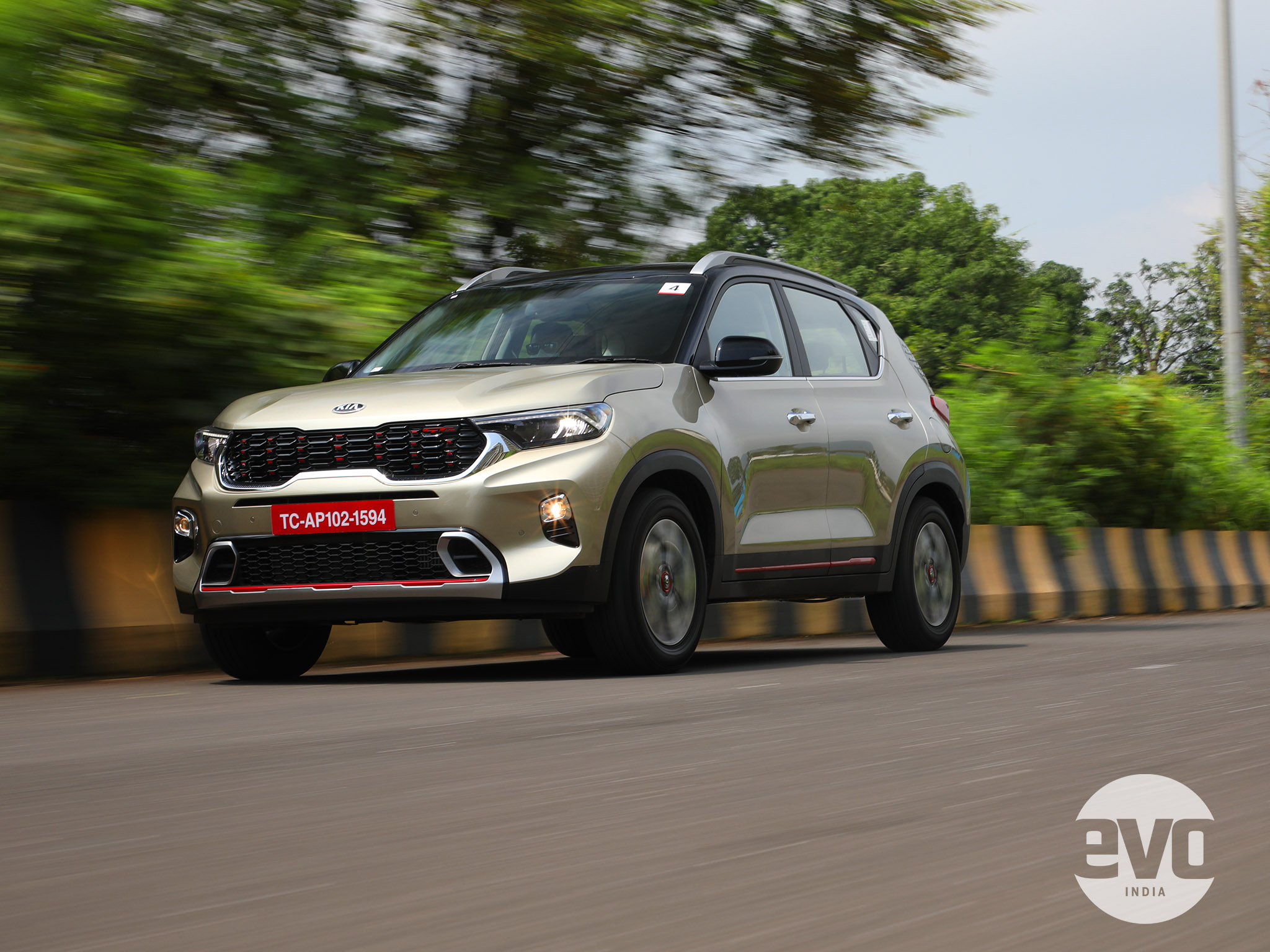 The Kia Sonet looks proportional despite the 4 metre length restrictions
The Kia Sonet looks proportional despite the 4 metre length restrictionsHow different can the Kia Sonet be to its cousin? That’s the first and obvious question on my mind as I head to the outskirts of Mumbai to pick up the Sonet for our first driving impressions. It is Kia’s third car for India, and just like the Creta is based on the Seltos, so too is the Sonet based on the Venue. It’s no secret, all the mass-market cars from the Hyundai Motor Group (the Carnival isn’t mass-market) will share common underpinnings and that’s the key enabler for expensive tech like the turbo-petrol engine, DCT gearbox, even a proper automatic on the diesel (unlike the AMT used by its rivals) to be deployed at sensible prices and thus made accessible for a larger audience. But what the two cousins are doing is making their cars look and feel completely different. And as far as design is concerned, Kia is knocking it out of the park.
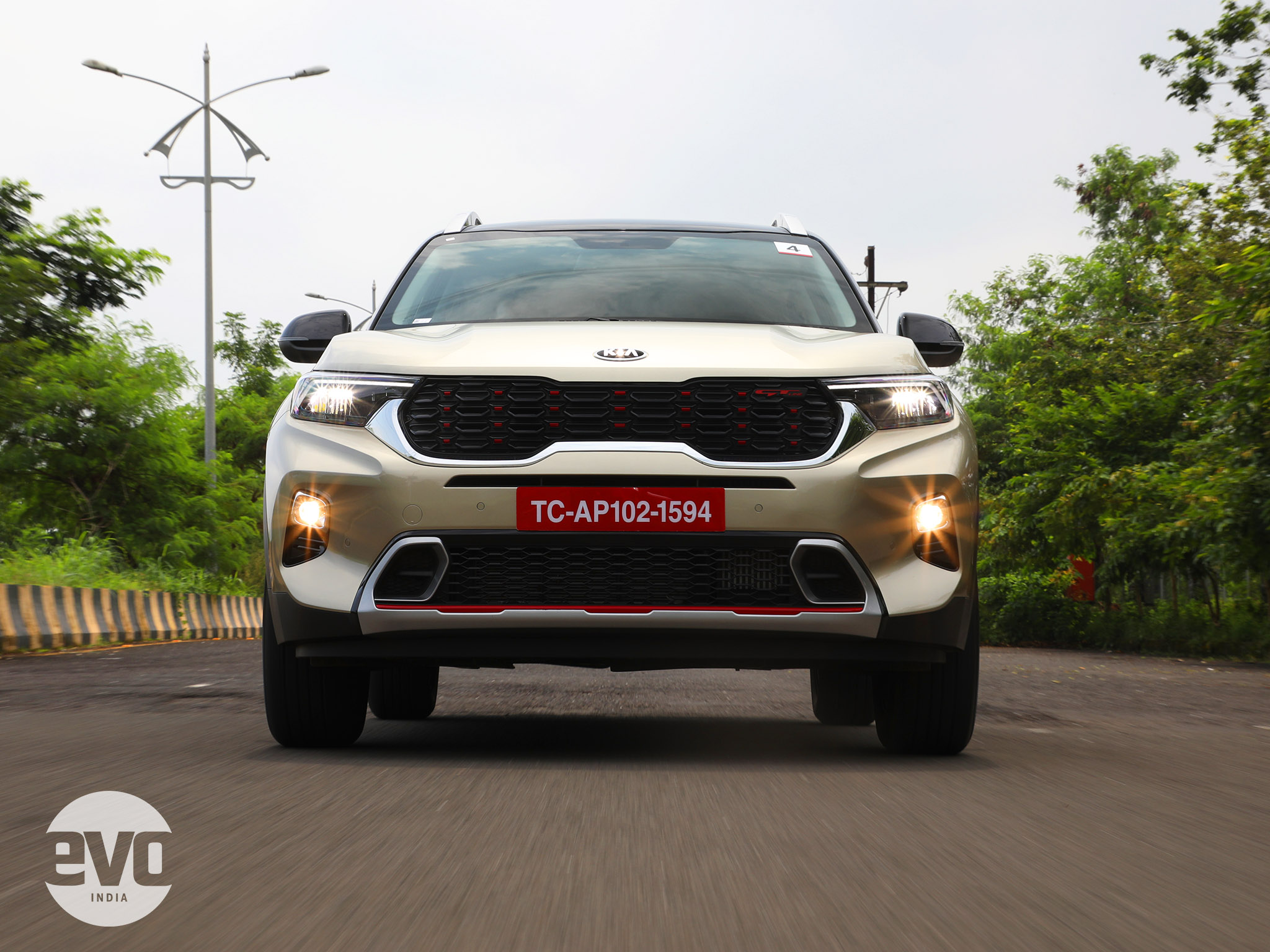 The Sonet gets the signature Tiger Nose grille and the GT Line gets red accents
The Sonet gets the signature Tiger Nose grille and the GT Line gets red accentsWild By Design
This is the communication slogan for the Sonet and I can confirm, it looks damn cool. Remember those days when anything ‘compact’ was prefixed by the word ‘dreadful’? Those days are long gone. Of course other compact SUVs, notably the Tata Nexon, are also great looking but the Sonet raises the bar. This baby Kia looks thoroughly proportional, from no angle does it look chopped to squeeze in under four meters and the detailing is just top notch. Had I paid attention to the virtual briefing I’d be able to explain what elements draw inspiration from the baby elephant and elaborate on the crown jewel headlamps and heartbeat DRLs. And of course there’s the Tiger Nose grille. That’s a lot of marketing jargon packed into one car and I haven’t even told you where Sonet got its name. Social Network! No, I kid you not!
Anyway, what you need to know is that, like the Seltos, there are two trim lines — Tech Line and the GT Line which we are testing. The latter gets the red striping and elements all over the car and, if you orders yours in black, it really looks damn cool. There are full LED headlights and taillamps, a properly muscular and conventionally handsome nose (no headlamps in the bumpers business going on here, which seems to be the trend these days), Mustang-ish air scoops in the air dam, gloss black grille with subtle red elements, dual-tone roof, stylish 16-inch alloys, taillamps that stretch the full width of the hatch, subtle boot spoiler and fake exhaust tips. In the metal it actually looks much bigger than it really is, and no where does it convey the impression that this is a sub 4-meter car. Did I mention that I like it very much?
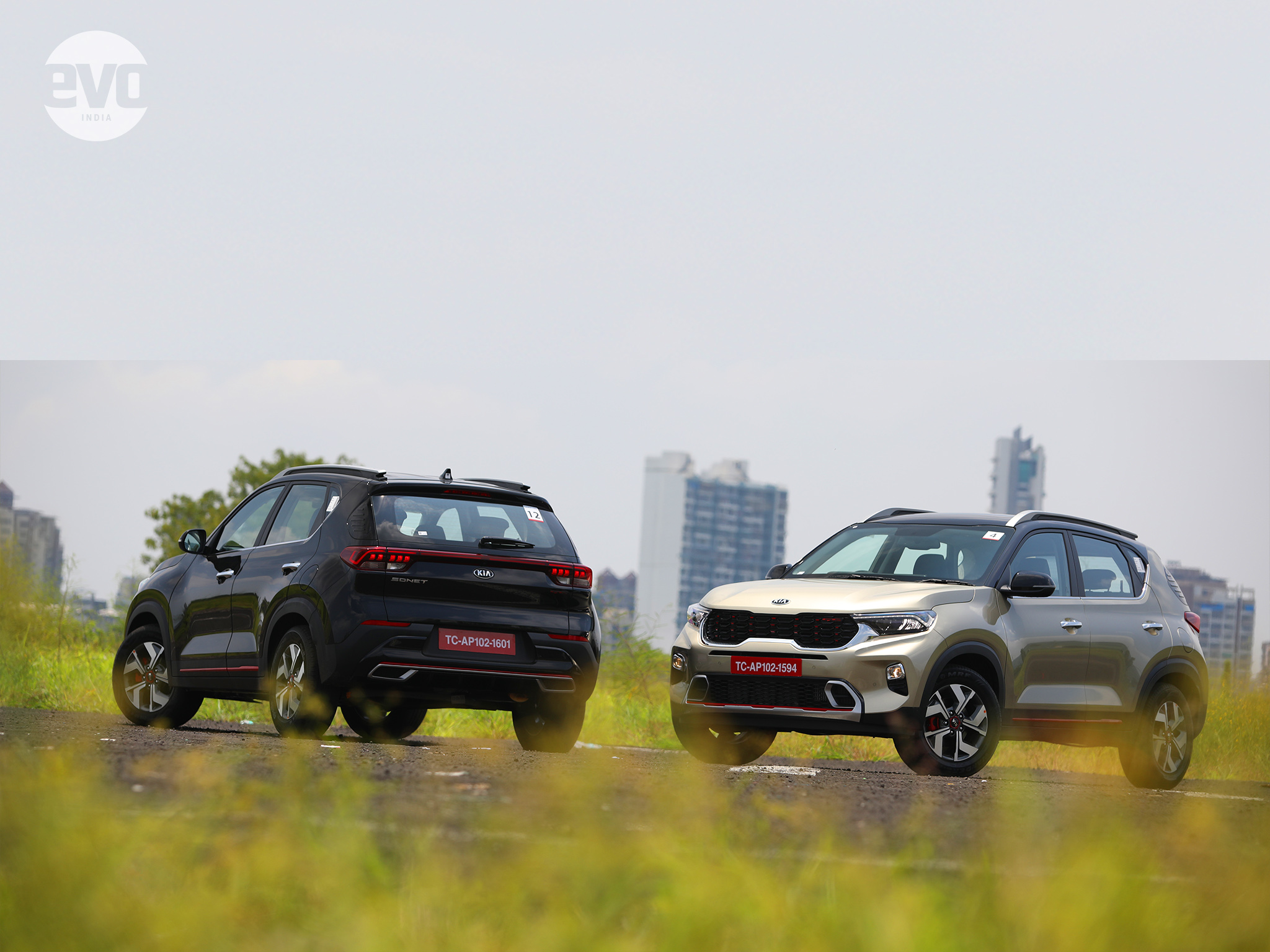 The styling of the Kia Sonet stays true to the concept car we saw at Auto Expo
The styling of the Kia Sonet stays true to the concept car we saw at Auto ExpoBaby-Seltos cabin
The GT Line trim is characterised by the all-black interiors, just like the Seltos, and that impression gets amplified as you spot the flat-bottom steering wheel, 10.25-inch touchscreen infotainment, even the pedals and stalks are all lifted out of the big brother’s cabin. And that makes the Sonet look and feel far more expensive and premium than any of its rivals — including its own cousin. Keeping with trends the Seltos also gets a digital cockpit — a big speedo with the multi-information display on the right that includes a tyre pressure monitor. Analogue dials flank the digital cluster, tacho on the left and fuel and temperature gauges on the right. I would have still preferred proper analogue dials but by the standards of (half-baked) digital cockpits these days, this one looks and works quite well.
My colleagues didn’t like the big buttons for the air-con but I think it makes it easier to use without taking your eyes off the road. Or you can use the new ‘Hello Kia’ service in the UVO-connect app to deliver voice commands. This is apart from the SOS and concierge services plus the remote starting, remote cooling, geo-fencing and alerts that is already there on the Seltos. Plus the Sonet’s air purifier gets a virus-killer and perfume dispenser (which is integrated in the armrest, and not free-standing in the cup holder like the Venue). The wireless charging tray is well integrated with no visible wires and the best part is that it has wireless Apple CarPlay, just like a BMW, which frees you from having to carry around a cable. You play tunes via a 7-speaker Bose sound system with the mood lighting. There are cooled front seats — and must-have to deal with the Indian heat — and the seats themselves are comfortable and very plush-feeling. There’s no panoramic sunroof (which really would be overkill on a compact SUV) or steering wheel paddles for the automatic but apart from that this is loaded to the gills. Come to think of it even the Seltos doesn’t have as much equipment!
As for space, Kia have done some jiggery-pokery to get a little more boot space than the Venue but truth be told there isn’t any more space and the back seat is just about adequate by current class standards. The Nexon, WR-V and XUV300 are all more spacious. But none have the features, equipment, style and sense of quality that the Sonet dishes out generously. And attention to detail — for instance even armrest on the door pads are leather covered. Cars costing three times as much force you to make do with plastic.
iMT transmission on the turbo-petrol
Now this would have been Kia’s trump card on the Sonet but the delayed launch due to the Covid-19 situation enabled Hyundai to make the jump. You can read all about how the transmission works here and watch our exclusive and comprehensive video here and the operations remains exactly the same on the Sonet.
This is a clutchless manual transmission in that the clutch is operated automatically and you shift the gears manually. Keep it in neutral to start the car, slot it into first to get going, and shift gears as you would normally, while your left foot remains at rest. There is a beeper that goes off if you forget to downshift, or try to take off from traffic lights in third gear — the system will not slip and ruin the clutch like a bad driver. Also, the shift times aren’t slow, in normal operation is shifts as quickly as you would and only when you are in the mood for a hustle
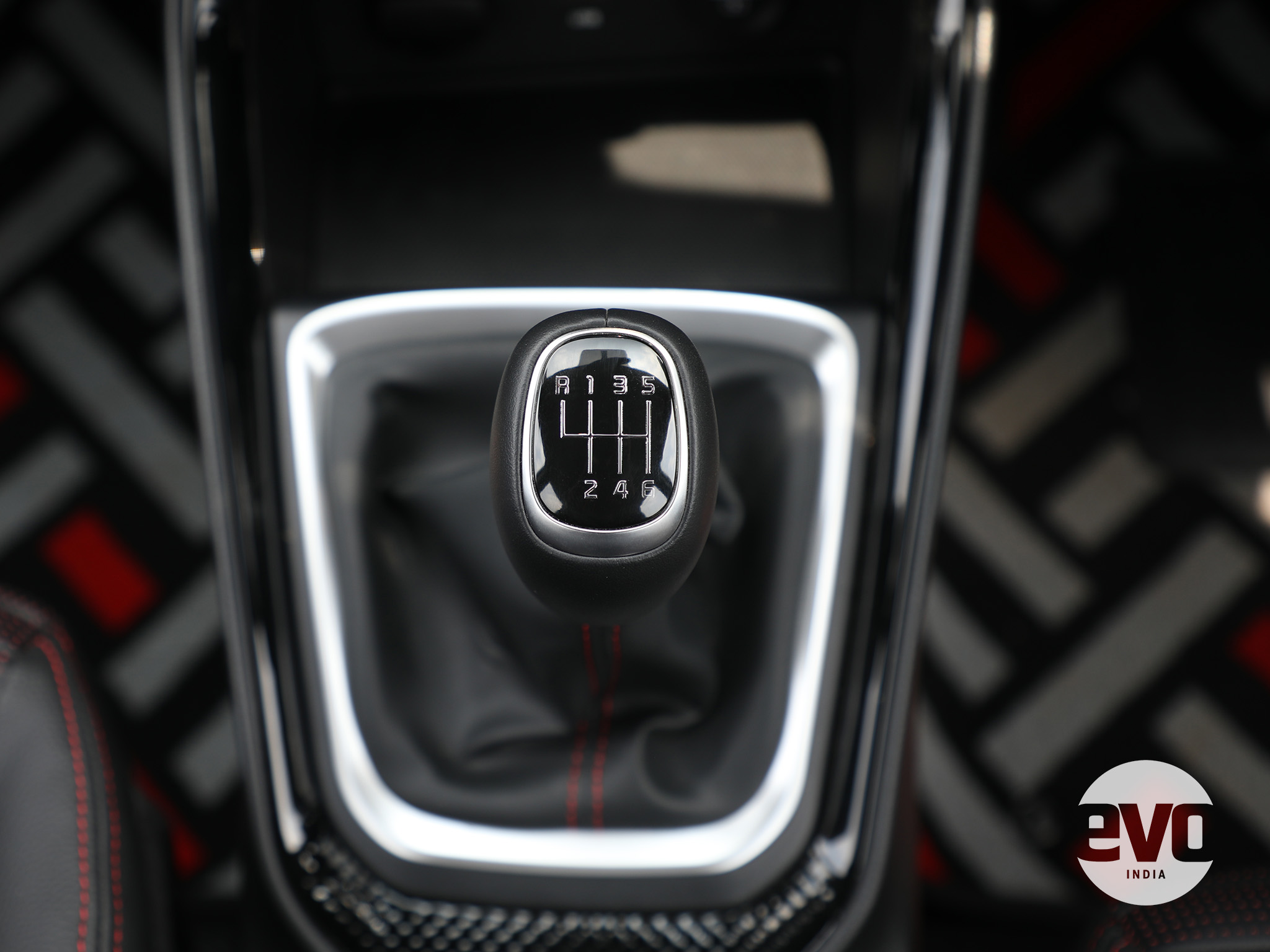 The iMT gets a manual shifter but no clutch pedal
The iMT gets a manual shifter but no clutch pedalAlso the system doesn’t let you launch aggressively with a bit of front wheel spin, like in a manual, and so the 0-100kmph launch takes 13.53 seconds. That’s nearly two seconds slower than the manual which is of only academic interest since Kia is not offering a manual on the turbo-petrol. What’s relevant is the iMT is a second slower than the DCT since the twin-clutch automatic does band in quicker shifts through the gears. That said, at an expected lakh of rupees cheaper than the DCT (we’re using Venue prices here as a benchmark), this is great value for money. And it works really well.
A word on the turbo-petrol too. You can feel the irregular 3-cylinder beat at idle and it is audible but with 118bhp and 172Nm of torque this is a fun, peppy motor. It delivers a good turn of speed, there isn’t much turbo lag, and it punches through the mid-range with enthusiasm. But, the surprise package, is the 1.5 diesel.
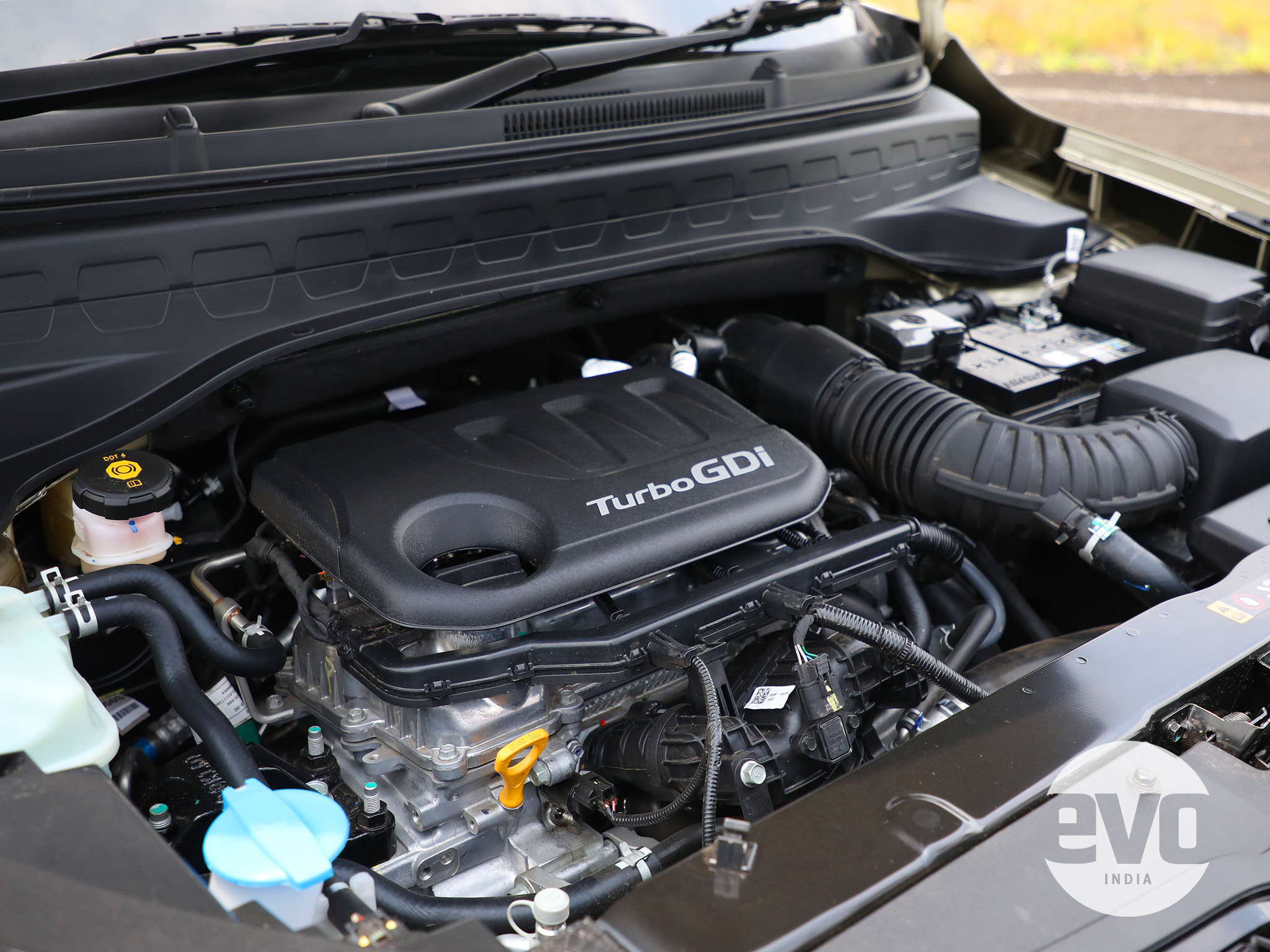 The turbo-petrol engine comes mated to the iMT and DCT, and doesn't get the option of a manual
The turbo-petrol engine comes mated to the iMT and DCT, and doesn't get the option of a manualVGT diesel and 6-speed automatic
The Sonet is the first diesel compact SUV to get a proper automatic transmission, and it is mated to the higher 113.4bhp spec of the engine, complete with the VGT turbo. This is lifted straight out of the Seltos and with the Sonet being smaller and lighter it really moves. 0-100kmph takes 11.89 seconds which is really quick and the mid-range punch of the engine, the flexibility, its in-gear acceleration is just excellent. The 6-speed auto is a quick gearbox, refined, smooth, and because there’s so much torque — 250Nm — it always feels on the boil. You are never left wanting for oomph. The refinement too is fantastic, you can barely make out it is a diesel. If I were in the market for a Sonet, this is the spec I’d buy. The manual gearbox gets the lower spec of this diesel engine making 98.6bhp and 240Nm. And the entry variant is the 1.2-litre naturally-aspirated petrol with the 5-speed manual.
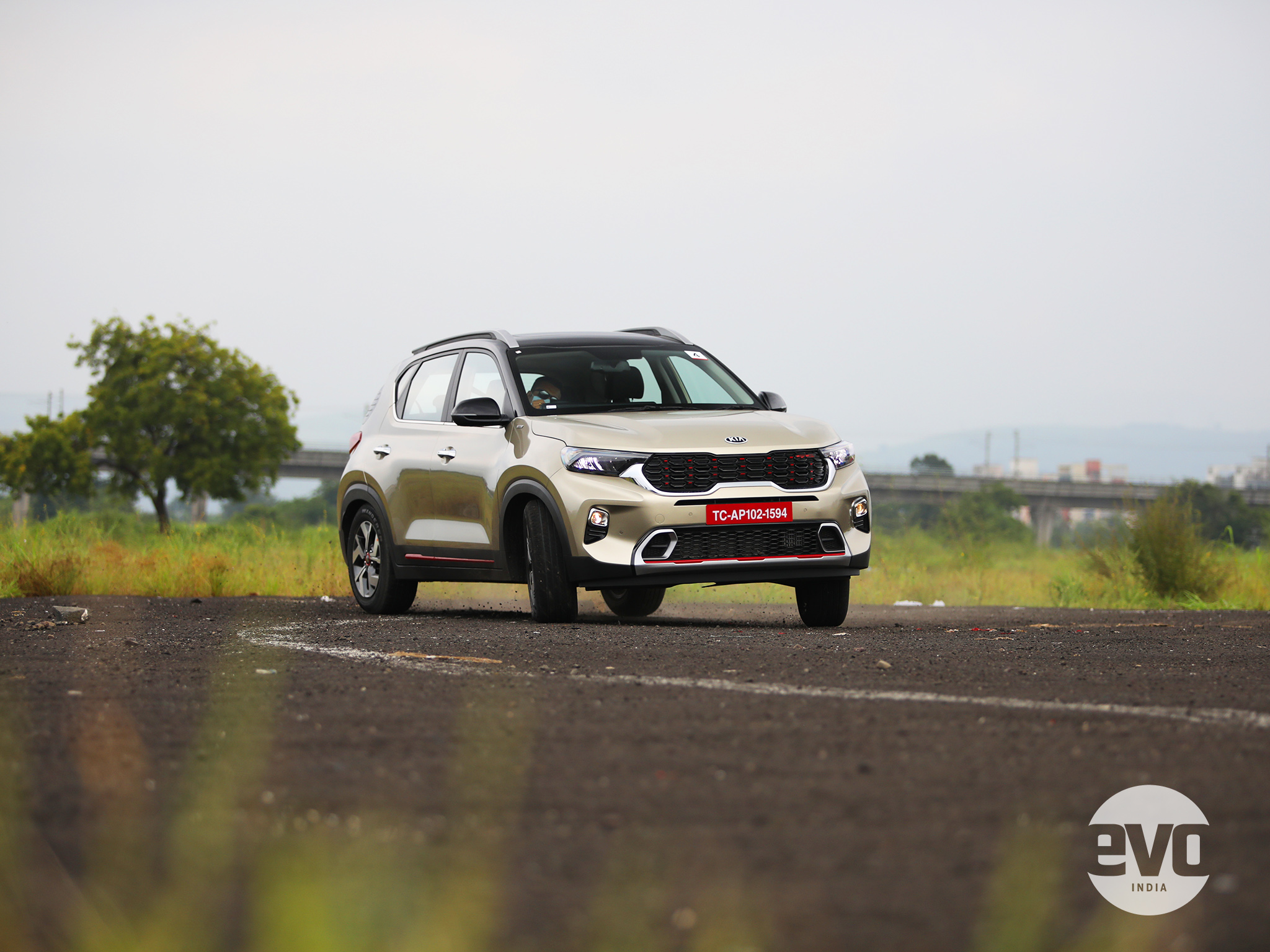 The Kia Sonet will thrill the enthusiast!
The Kia Sonet will thrill the enthusiast!Ride and handling
The punchy engines are mated to excellent ride and handling manners. In this sense it is no different to the Venue, the reigning Indian Car of the Year. The ride is on the firmer side and, while in isolation you won’t find cause for complaint, when you drive it back-to-back with a Nexon it feels a bit too firm especially around the city. The handling is sure-footed, enthusiastic and the chassis is stiff enough to lift the inside rear wheel during enthusiastic cornering. Both variants we tested get ESP as standard and while switching it off it will allow some hoonery, it will cut back in if it senses things going pear-shaped. Bottom line though is the Sonet is really nice to drive and I’d happily recommend it to you as a daily driver, even if (or especially if) your other car is an Octavia vRS.
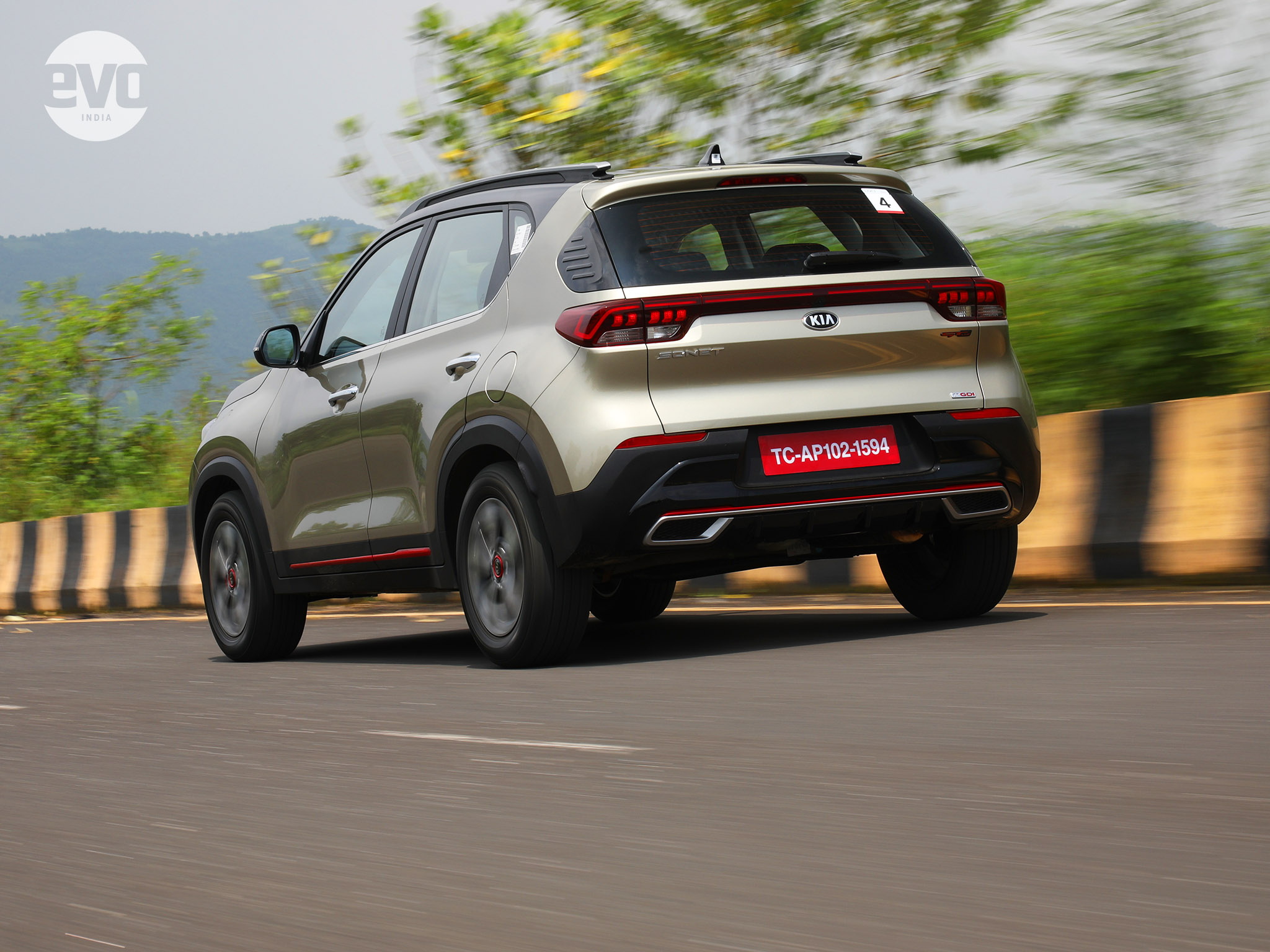 The rear is definitely one of the nicest angles of the Sonet
The rear is definitely one of the nicest angles of the SonetVerdict
Compact SUVs were something you bought because you couldn’t afford something bigger. It was always a compromise — if not on design, then on powertrains (AMT, oh dear!), or equipment, or refinement. But save for space, the Sonet isn’t compromised in any way. It has powerful engines, modern technology, is overflowing with equipment, is very high in quality and — like the Seltos — its styling will turn heads and get buyers to sign on the dotted line.
We will only know the pricing on September 18 but going by what Kia have done with the Seltos, they’re hardly going to mess this up. Expect the range to start at Rs 7 lakh and this turbo-petrol with the iMT to be priced at Rs 11.5 lakh and the diesel automatic at Rs 12 lakh. Another winner from Kia? You bet it!


